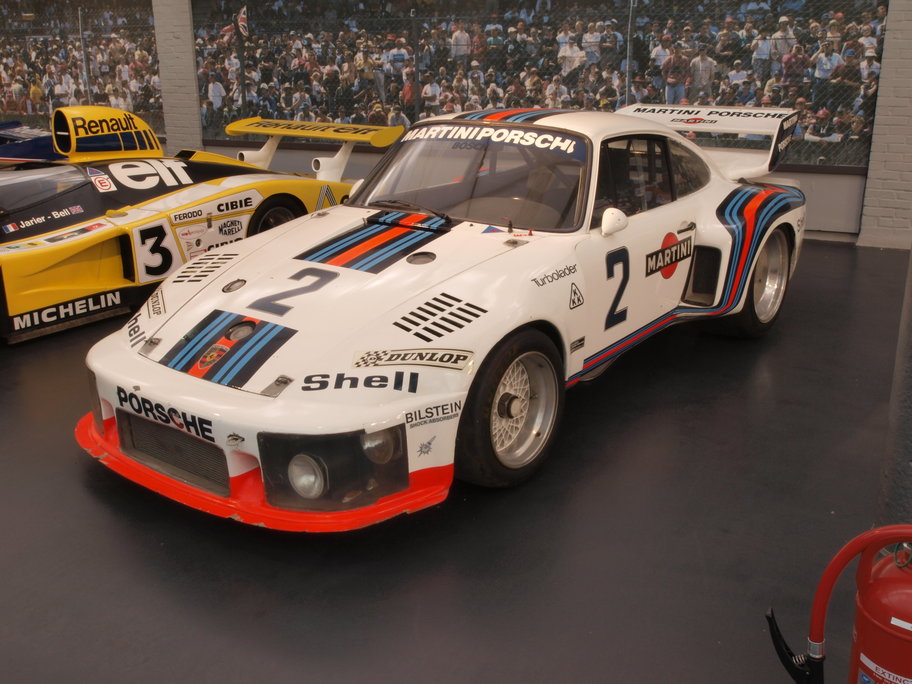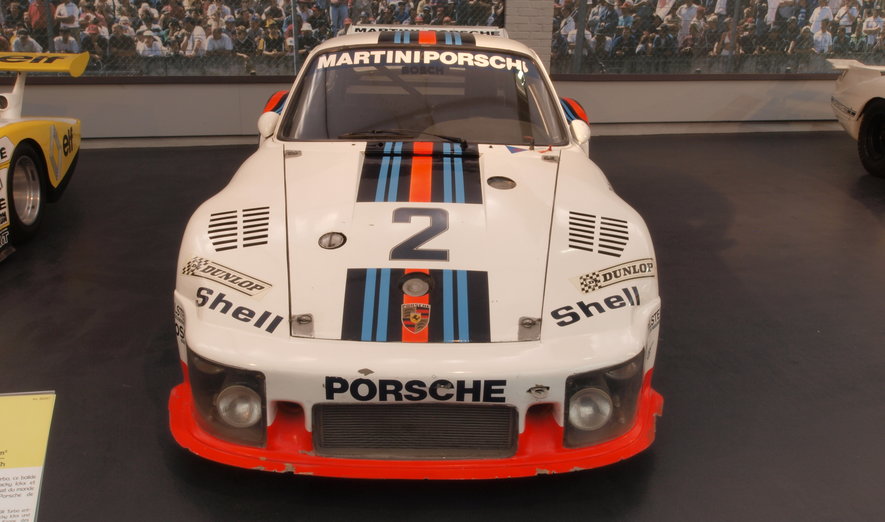The 1976 Porsche 935 was the first model year of this vehicle. The German automaker designed it specifically to compete in a range of “Silhouette” races in Group 5, including IMSA GT, Deutsche Rennsport Meisterschaft, and the World Championship of Makes.

Source: Wikimedia
Creating the 935
The Porsche 935 was loosely based on the Carrera RSR 2.1 Turbo, which participated in the 1974 24 Hours of Le Mans. Since Group 5 regulations were more relaxed, the engineer behind the project, Norbert Singer, was able to make dramatic changes to the Porsche 935. This included changing the outer-bodywork from the steel monocoque in the standard 930. The freedom to make adjustments resulted in a very large rear wing and bigger fender flairs. In the middle of the 1976 season, Porsche changed the headlights to a flat-nose design.
While the Porsche 935 kept the body shell of the 930 Turbo, it got an aluminum roll cage for added stiffness. The front and rear featured fiberglass, and 5-inch wheel arches surrounded the rear 15-inch tires. The car featured a great deal of lightweight construction, such as plexiglass windows, so it was actually 90 kilograms underweight, as the race required 970 kilograms; the rest was made up with ballast.
Originally, the Porsche 935 used the fender-mounted headlights from the 911, both a high-speed variation for improved aerodynamics and a sprint version. Singer found a loophole for fender modifications, however, and this let it get rid of the headlights, reducing drag and improving downforce.
Powering the Porsche
To participate in the races, the Porsche 935 had to have an engine smaller than four liters. Porsche gave it a 2.9-liter featuring a turbocharger that helped it deliver nearly 600 brake horsepower. The engine had a 908-style fuel pump and dual ignition, along with plunger-type fuel injection. This powertrain was a 560-horsepower variation of the standard 3-liter flat-6. The boost varied from 1.35 to 1.55. The fuel consumption was horrible, 52 liters per 100 kilometers, a figure that isn’t unexpected for a racecar.
To compensate for all this power, the 1976 Porsche 935 got dramatic upgrades to the wheels and suspension. The latter of these got larger ventilated discs, adjustable anti-roll bars, and coil springs.

source: WikiMedia
How It Did on the Track
Since the Porsche 935 was designed for racing, it should come as no surprise that it did fairly well. It took home titles for the 6-hour races at Dijon, Vallelunga, and Mugello. In 1979, it won the 24 Hours of Le Mans overall. In total, this model entered 370 races and won 123.
Comparing the 935 and 934
The Porsche 934 is incredibly similar to the 935. Both were designed for the racetrack and feature plenty of power. The Porsche 934 built on the 1975 911 Turbo, tweaking the suspension and adding some more power. The 934 was built for the Group 4 rules and had 485 horsepower. Some teams that were customers actually got Porsche 934s and then modified them to meet the Group 5 rules via body kits from the automaker. That model had just as good of a reputation for winning races as the 935, with both taking home numerous titles over their histories.
